Illegal logging still threatens Cambodia's forests despite ban: Special report
Thousands of tonnes of natural forest wood still crossed the border into Vietnam, even after a Cambodian ban on timber exports early this year. Pichayada Promchertchoo follows the timber trail with a 'wanted man'.
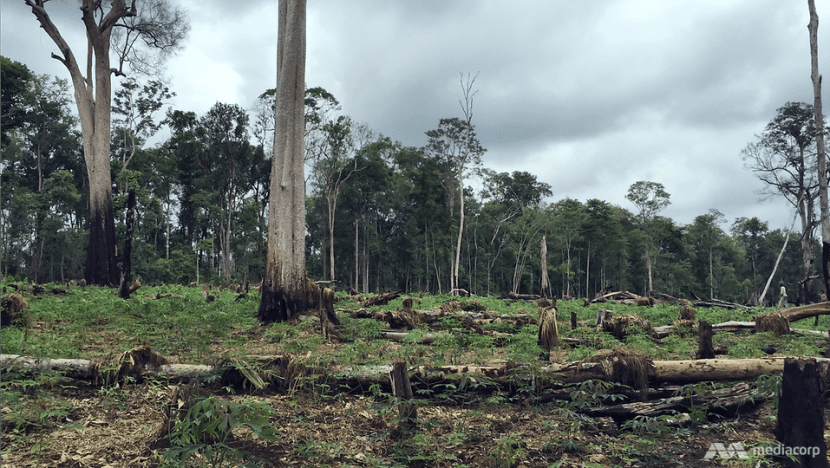
Stumps of felled trees can be seen in this part of a protected forest in Mondulkiri. Despite a nationwide crackdown on forest crimes, illegal logging is believed to continue in Cambodia. (Photo: Pichayada Promchertchoo)
Thousands of tonnes of natural forest wood still crossed the border into Vietnam, even after a Cambodian ban early this year. Indochina correspondent Pichayada Promchertchoo follows the timber trail with a 'wanted man'.
SEN MONOROM, Cambodia: The road was pitch black but far from empty. Every minute or so, a muddy motorcycle would emerge from the dark and disappear within seconds, laden down with logs tied to the back seat.
“They come through all the time,” Ouch Leng told me as we watched them fly past the Pech Chreada Forestry Administration office. Dark mud stains hinted at an arduous journey through the nearby forest, a protected area of nearly 430,000 hectares in eastern Mondulkiri, wet with monsoon rain.
“They only pay the authorities when they come back from the Vietnam border with money,” the 42-year-old added.
Hours before, I had met Leng in Phnom Penh for the first time. He said he was being watched, but still offered to take me into the forest, where rare trees are believed to be illegally felled as part of a black-market international trade.
Our short discussion had quickly turned into a seven-hour drive to Sen Monorom, the capital of Mondulkiri. The border province is home to one of the largest protected forests in the country, and forms part of the timber trail that leads to Vietnam.
I was driving with one of Cambodia’s “most wanted men”.
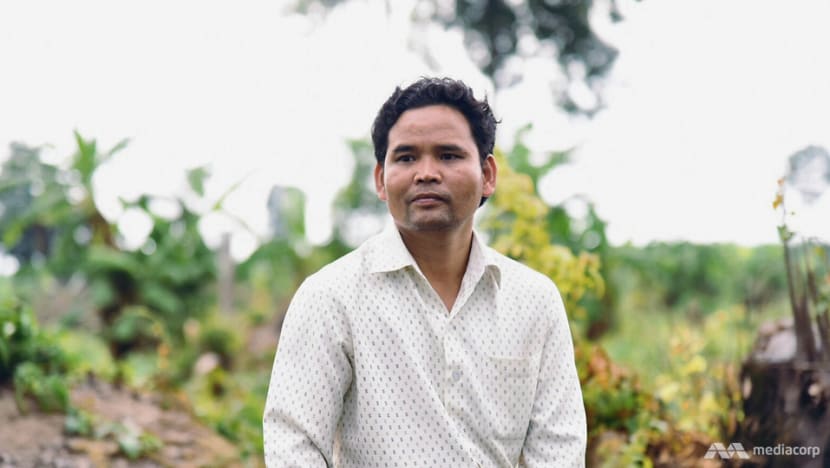
But Leng is not a criminal. He is an environmental activist, human rights lawyer and the winner of this year’s prestigious Goldman Environmental Prize for Asia. He has spent more than 20 years fighting to save Cambodia’s forests, and travels the country, often undercover, to investigate logging.
Death threats have become part of his life; so has living in a safe house. The forest defender says that danger lurks everywhere, and he is constantly on the run.
“They haven’t pressed any legal charge against me yet because what they want is my life,” he said with a smile. “I’ve never been afraid. I’m just trying to work.”
“They” are people with influence, who want Leng to shut up. “They” are among the powerful few who defy the law and profit from one of the most lucrative markets in the country: The timber trade.
Watch: Ouch Leng takes us down Cambodia's timber trail
CRACKDOWN ON ILLEGAL TIMBER TRADE
The multi-billion dollar business has been thriving, fuelled by illegal logging and corruption as well as legitimate efforts.
Last year, Cambodia became Vietnam’s largest source of timber imports. At least 435,600 cubic metres of natural forest logs and sawn wood, worth more than US$380 million, left its borders for Vietnam, according to the General Department of Vietnam Customs’ statistics obtained by US environmental group Forest Trends.
“The rate of growth has been astonishing,” the group said in its most recent report, which showed the volume of imported logs skyrocket – from 383 cubic metres in 2014 to 57,700 cubic metres in 2015. That's a near 15,000 per cent increase.
The volume of sawn timber imports from Cambodia also expanded in the same period, the report showed, from 153,500 cubic metres to 377,900 cubic metres.
Of those sawn timber imports, 82 per cent was classified as either high-value species or luxury species, and was mainly for re-export to China, Hong Kong and India or as semi-finished products for global markets.
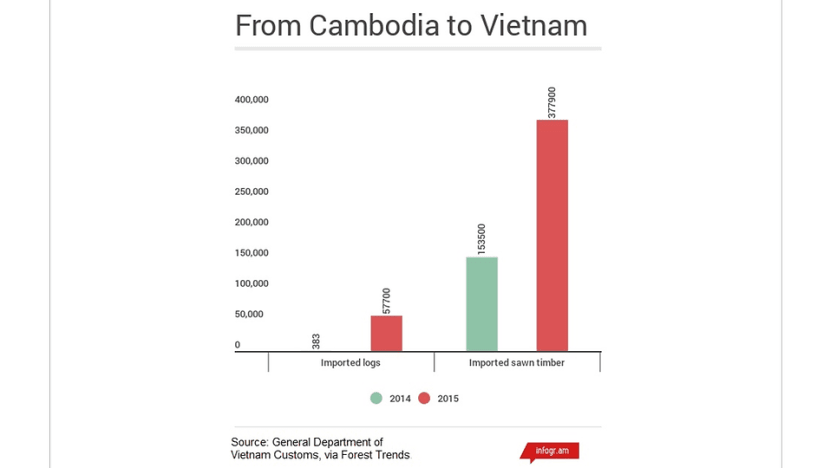
A key driver of this surge in timber exports from Cambodia to Vietnam was the deregulation of import licensing by Hanoi. Import procedures were simplified and timber imports were allowed at all border gates between the two countries.
The increase also coincided with a lack of timber supply from Laos and Myanmar, which banned log exports in response to overharvesting.
Adding to the booming business were alleged links between all sorts of people – from loggers to smugglers, community leaders, police officers, soldiers, government officials and business tycoons – accused of depleting Cambodia’s forests at breakneck speed as they chased easy money.
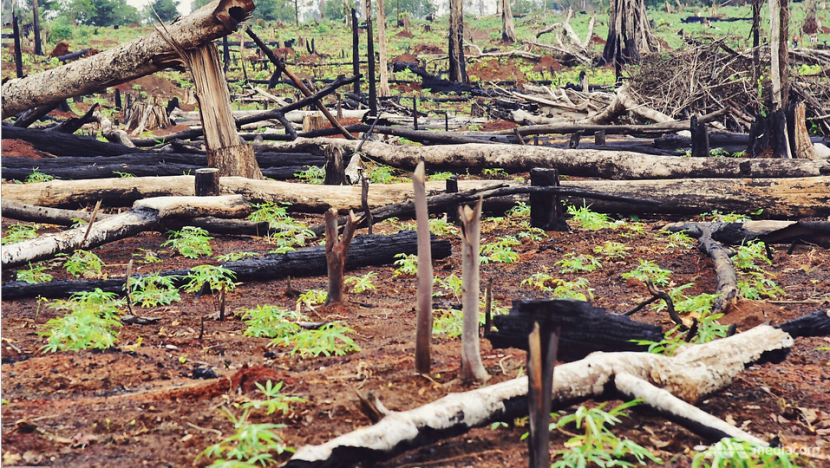
The situation had become so alarming that in January, Cambodia’s Prime Minister Hun Sen intervened. He imposed a ban on all timber exports to Vietnam.
He ordered the closure of Cambodia-Vietnam border crossings for timber trade and set up a special task force to stop forest crime – a 10-member committee comprising district police, military police and forestry officials led by the National Military Police Commander Sao Sokha.
The order triggered probes into high-profile businessmen. A string of raids took place at warehouses and economic land concessions suspected of illegal activities.
Arrests were made. Tens of thousands of cubic metres of wood were confiscated. For a few months, Cambodia witnessed what seemed like a serious crackdown on the timber trade.
‘TURF WAR BETWEEN LOGGING CARTELS’
But for some observers, the nationwide campaign was nothing more than a turf war between Cambodia’s biggest logging cartels and, after an initial sharp slowdown, business is starting to pick up again.
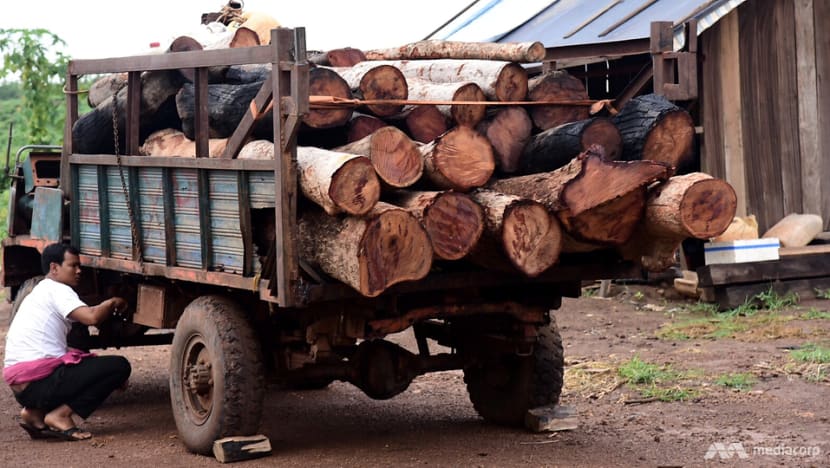
“According to our sources, the crackdown was triggered by a business dispute between competing logging cartels, rather than an earnest attempt to stamp out the illegal exploitation of Cambodia’s forests,” said Kerstin Canby, Forest Policy, Trade and Finance Program Director at Forest Trends.
“There is little sign of legal follow-up by the authorities. Field research suggests that most of the purportedly confiscated timber has found its way across the Vietnam border already.”
Data from Vietnamese customs obtained by the group shows the timber exports have continued despite the ban. In January, 34,000 cubic metres of wood still found its way into Vietnam. The number plummeted to 5,000 cubic metres in February before growing to 10,000 cubic metres in March.
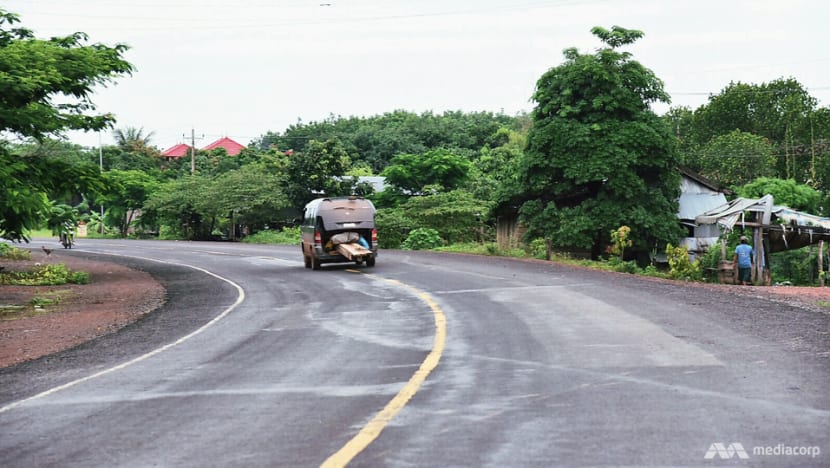
But according to Cambodian Environment Minister Say Samal, these figures are “groundless” and “falsified”.
“I doubt it’s true. How can you move 10,000 cubic metres of wood across the border without anyone noticing?” he told Channel NewsAsia.
“I'm not denying there are cases where people are still conducting illegal activities with regard to the forest. But I'd like to point this out: It is a problem. But is it at the scale that was reported? No, I don't think so.”
The Environment Ministry has been studying various reports about forest crimes and cross checking with people on the ground to understand the real situation, Mr Samal said.
“But the majority of our findings show the reports are just politically motivated. No more wood is flowing out.”
DISRUPTED BUT NOT STOPPED
While the trade may not have been eliminated, the crackdown has disrupted the organised, large-scale smuggling by the well-connected operators who were crossing the borders before.
In Mondulkiri, the impact has been noticeable, according to residents. The streets are seeing fewer timber trucks, and traffic along its border crossings is much lighter.
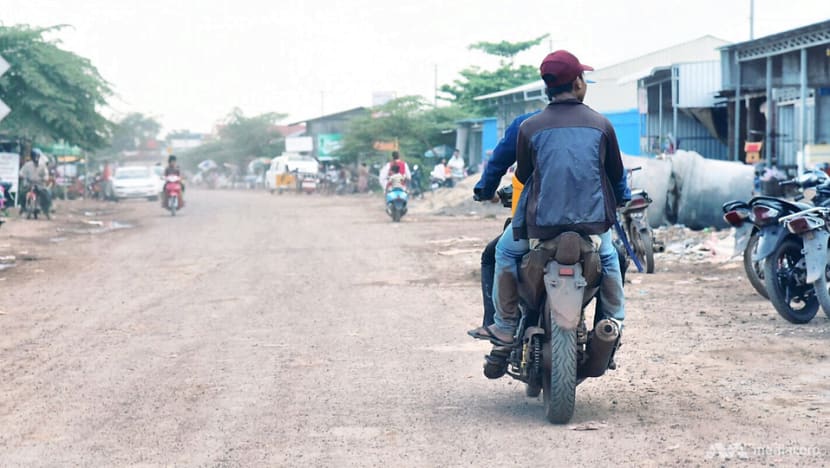
“Only soldiers and police officers come here now,” said a shop owner near the La Pakhe bilateral border gate, once teeming with people and cars. It is almost deserted.
But the illegal timber trade seems to be adapting.
“We don’t see so many timber trucks nowadays. But there are still a lot of timber motorcycles and cars. They transport wood from the protected forest to buyers elsewhere,” a local resident told me.
“They are mostly small-scale operators avoiding official channels altogether,” Ms Canby added.
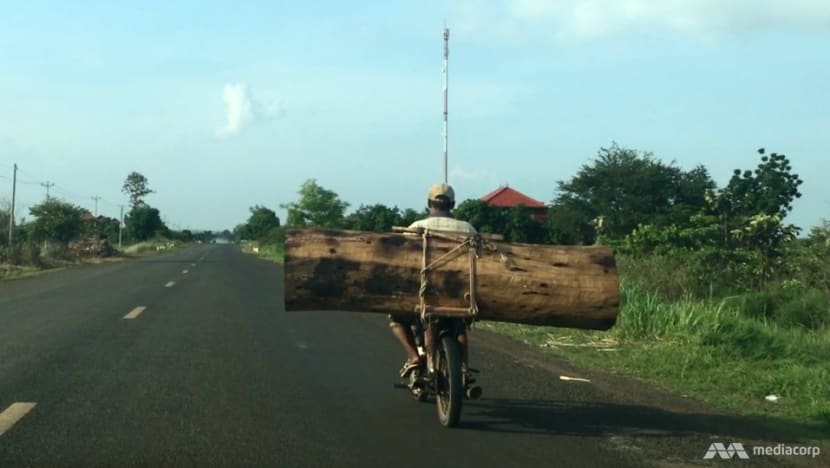
From the dark, an old minivan whizzed past. Strips of sawn wood could be seen protruding from the boot.
The vehicle was stopped at one of the checkpoints between Mondulkiri and Vietnam, but its driver seemed to know the drill. Casually, he approached a local officer and in one swift moment, placed some money on his table.
Without much delay, the minivan zoomed off with timber still sticking out like a big, long tail.
“You see that? No arrest! They just let him go,” Leng said bitterly.
“Forest Administration officials, rangers and soldiers just wait to take money from loggers. They even make it easy for them to cross the border.”
TIMBER LAUNDERING
The journey to the protected forest of Mondulkiri was rough and muddy. We set out early on motorcycles and bumped along a winding dirt road for three hours. The sight was alarming.
There was hardly any trace of protected forest left.
Trees had been chopped down and uprooted. Unwanted trunks and huge stumps lay sprawled across the forest. Almost everywhere, plantations spread far out of sight.
Thousands of hectares of what was once a pristine forest are cleared for Economic Land Concessions (ELCs) – a long-term lease that allows investors to use private state land for large-scale agriculture.
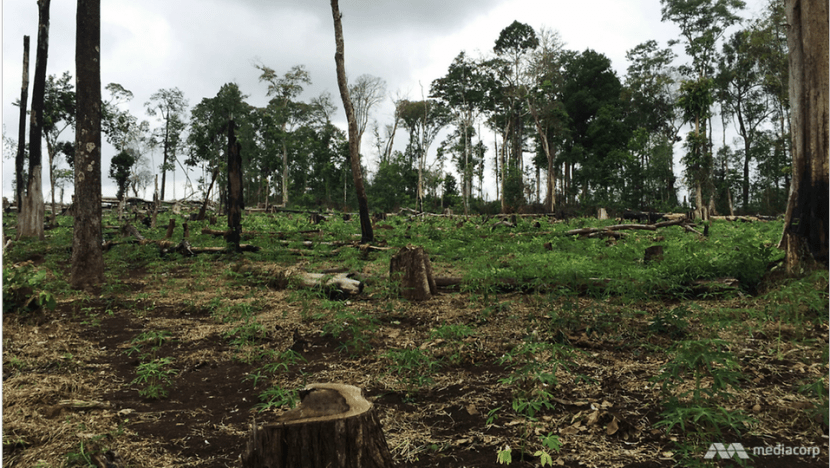
“Most ELCs are in forested areas with big trees,” said Sok Ratha, Provincial Coordinator of the Cambodian Human Rights and Development Association (ADHOC) in Mondulkiri.
“The government granted land to private companies to grow rubber, pepper and other crops. Now, the forest is almost completely destroyed. Areas outside ELCs are also threatened.”
The Cambodian Government introduced Economic Land Concessions to stimulate the economy and create jobs for local people. It has granted more than 270 concessions, which, according to the environment minister, span an area of 1.2 million hectares nationwide.
The land is meant for industrial agriculture, which involves cultivating crops, raising animals and constructing facilities to process agricultural products.
Successful applicants are awarded the right to clear the land for agriculture. They are therefore allowed to cut all the trees in the premises, install sawmills to process the legally cut wood and export the products.
But that is not always the case. The scheme soon found itself at the heart of Cambodia’s timber trade, with many ELCs apparently used to cover up illegal logging operations.
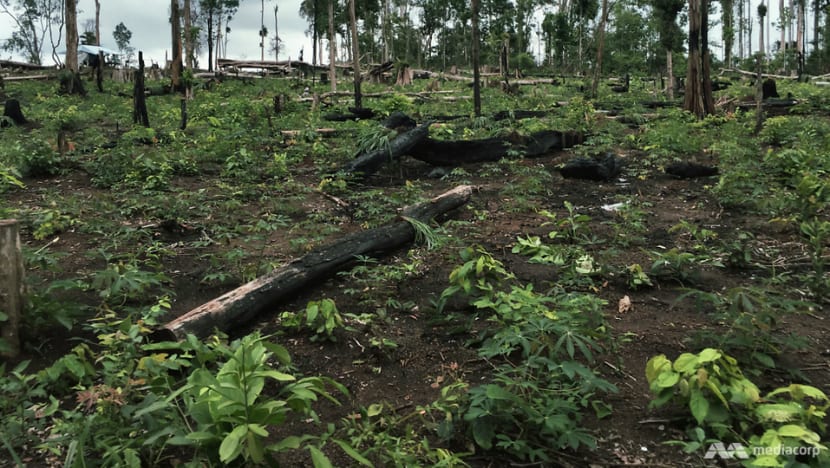
“Once they’ve depleted their land, they’ll cut more trees outside the ELC.
"The wood is then brought to their sawmills, where illegal logs are turned into legal timber. The timber is then transported to other countries through the Vietnam border and the international port at Sihanoukville,” Leng explained.
“This is the strategy of Cambodia’s timber business,” he said.
Nonetheless, Mr Samal is clear: “Let me put it this way: Large-scale illegal logging has been stopped. Period. It's done.”
NO BRIBES, NO BUSINESS
Despite Mr Samal’s certainty, evidence suggests there is some way to go before the illegal timber trade is eradicated in Cambodia, with a well-established, sophisticated system still in place that needs to be dismantled.
In Tbong Khmum, busy roads were full of big trucks. Most of them carried something heavy under huge tarpaulins covering the storage compartment. Tears in the plastic revealed stacks of timber inside.
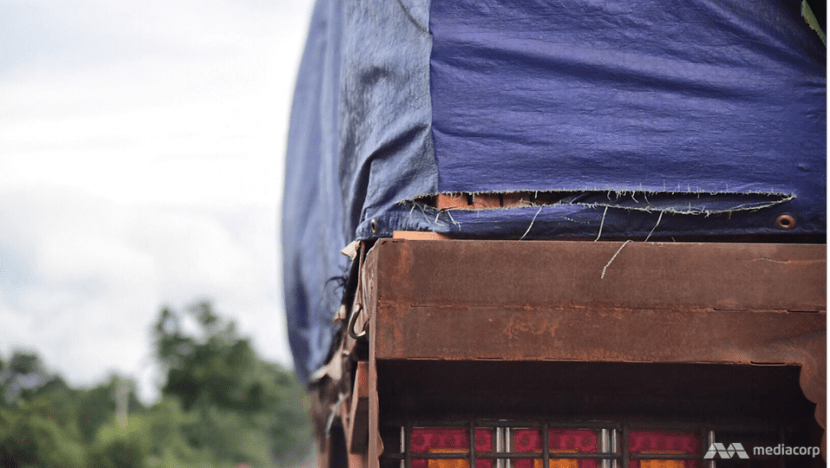
“Sometimes, what you see is just a hollow frame, with luxury-grade wood hidden in the middle. Nobody checks,” Leng told me as we tailed a small train of timber trucks.
A road sign indicated they were headed towards Trapang Plong International Border Checkpoint. It is one of the main gateways on the timber trail between Cambodia and Vietnam. The area is also home to timber depots, casinos, hotels and inland ports owned by wealthy businessmen.
One of the trucks pulled over at an export customs clearance office. Its driver carried a document in his hands and disappeared through a small entrance.
“He needs an export permit to cross the border,” Leng said.
It did not take long. The driver reemerged, climbed back on his truck and drove off. We followed on a dusty road.
His truck soon joined others that had gone ahead. They were scattered near the border crossing. Some were parked in front of a depot, others a few hundred metres from the international border gate, purportedly ready to enter Vietnam.
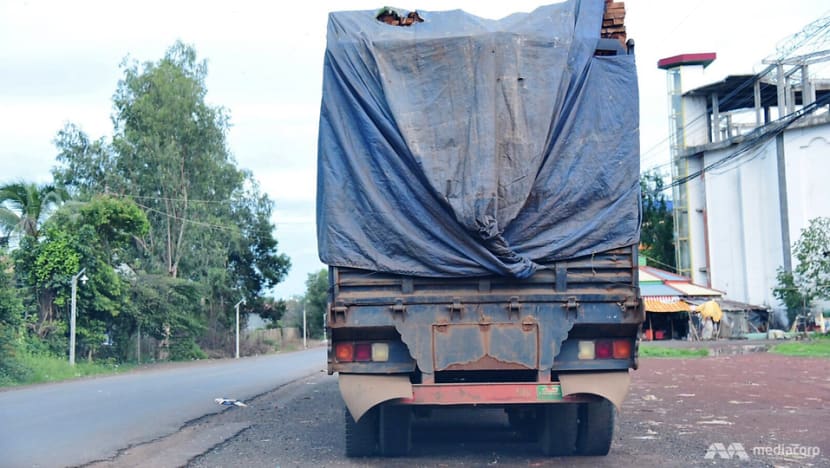
“They have to wait for other trucks from the same company because the export permit can only be used once.
"It also indicates the total volume of goods that will cross the border. One truck can carry about 20-30 cubic metres of wood. They usually cross the border late at night,” Leng explained.
“I support the government’s ban. But it’s just a promise that only lasts a short time.”
The sun had already disappeared. There was not much light on the road leading into Vietnam, save for the headlights of transport trucks crossing the border. Their storage compartment was left open. No timber.
But a short walk away, several trucks stood in the dark. Something was covered under big tarpaulins. Leng was sitting by the road with his camera.
“The timber business still operates," he said.
This is the first in a series of reports on forestry issues in Cambodia. Follow Pichayada Promchertchoo on Twitter @PichayadaCNA
Read Part 2: Cambodian villagers fear for future amid forest burning dispute












